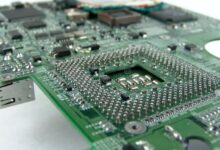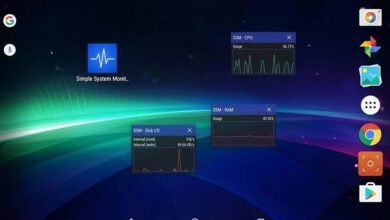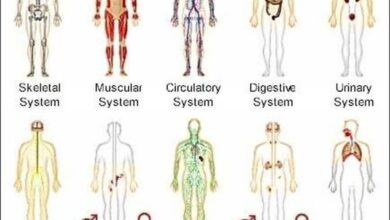System Board: 7 Powerful Insights You Must Know in 2024
Welcome to the ultimate guide on system board technology—your gateway to understanding the core of modern computing. Whether you’re a tech enthusiast or a curious beginner, this article breaks down everything in a clear, engaging way.
What Is a System Board? The Foundation of Modern Computing

The term system board is often used interchangeably with ‘motherboard,’ but it carries a broader technical implication, especially in enterprise and industrial computing. At its core, a system board is the primary printed circuit board (PCB) within a computer or electronic device that connects and enables communication between all critical hardware components.
Defining the System Board
A system board serves as the central nervous system of any computing device. It integrates the central processing unit (CPU), memory (RAM), storage interfaces, input/output (I/O) ports, and peripheral connectors. Unlike generic motherboards found in consumer PCs, system boards are often designed for specific applications such as servers, embedded systems, or industrial automation.
- Acts as the main hub for all hardware components
- Facilitates data transfer via buses and chipsets
- Supports firmware like BIOS or UEFI for boot operations
“The system board is not just a piece of silicon and copper—it’s the architectural blueprint of computational intelligence.” — Dr. Alan Reed, Hardware Systems Engineer
System Board vs. Motherboard: Is There a Difference?
While many use the terms interchangeably, there are subtle distinctions. A motherboard typically refers to the main board in a personal computer, adhering to standard form factors like ATX or microATX. In contrast, a system board may refer to custom-designed boards used in specialized systems such as medical devices, aerospace modules, or IoT gateways.
- Motherboard: Standardized, mass-produced, PC-centric
- System board: Customizable, application-specific, often embedded
- Both perform similar functions but differ in scope and design philosophy
For example, a Raspberry Pi uses a system board that integrates CPU, GPU, RAM, and I/O on a single compact PCB—blurring the line between system-on-chip (SoC) and traditional motherboard design.
Key Components of a System Board
Understanding the anatomy of a system board is essential for anyone interested in hardware design, troubleshooting, or system optimization. Each component plays a vital role in ensuring seamless operation.
CPU Socket and Chipset
The CPU socket is the physical interface where the processor is mounted. It determines processor compatibility—Intel LGA and AMD AM5 are two common socket types. The chipset, usually located near the CPU, manages data flow between the processor, memory, and peripherals.
- Northbridge (historical): Handled high-speed communication (now integrated into CPU)
- Southbridge: Manages slower I/O functions like USB, SATA, and audio
- Modern chipsets support PCIe lanes, NVMe, and Thunderbolt
For instance, Intel’s Z790 chipset supports PCIe 5.0 and DDR5 memory, enabling faster data throughput for gaming and content creation.
RAM Slots and Memory Controllers
System boards feature DIMM (Dual In-line Memory Module) slots for installing RAM. The number of slots and supported memory type (DDR4, DDR5) directly impact multitasking performance. The memory controller, now integrated into the CPU, regulates data exchange between RAM and processor.
- Most consumer system boards support 2–4 RAM modules
- Dual-channel or quad-channel configurations boost bandwidth
- Maximum supported RAM varies from 64GB to 128GB or more
High-end workstations may use ECC (Error-Correcting Code) RAM, which detects and corrects memory errors—critical for servers and scientific computing.
Expansion Slots and Connectivity
Expansion slots allow users to add functionality via PCIe (Peripheral Component Interconnect Express) cards. These include graphics cards, network adapters, and SSDs. Modern system boards support PCIe 4.0 or 5.0, doubling bandwidth with each generation.
- PCIe x16: Typically used for GPUs
- PCIe x1: For sound cards, Wi-Fi modules
- M.2 slots: Enable ultra-fast NVMe SSDs directly on the board
For more details on PCIe standards, visit PCI-SIG Official Website.
Types of System Boards Based on Form Factor
Form factor defines the physical size, shape, and layout of a system board. Choosing the right one depends on the intended use—be it a compact home theater PC or a high-performance server.
ATX and Its Variants
Advanced Technology eXtended (ATX) is the most common form factor for desktop computers. Measuring 12 x 9.6 inches, it offers ample space for multiple expansion slots and cooling solutions.
- Standard ATX: Ideal for full-sized towers
- microATX: Smaller (9.6 x 9.6 inches), fewer PCIe slots
- flexATX: Even smaller, used in compact builds
Despite being older, ATX remains dominant due to its balance of expandability and compatibility.
Mini-ITX and Ultra-Compact Designs
Mini-ITX boards measure just 6.7 x 6.7 inches, making them perfect for small form factor (SFF) PCs and embedded applications. While limited in expansion, they offer full functionality with integrated graphics and Wi-Fi.
- Popular in home servers, media centers, and kiosks
- Low power consumption, ideal for 24/7 operation
- Often used with fanless cases for silent performance
Brands like ASRock and Gigabyte offer ruggedized Mini-ITX system boards for industrial use.
Server and Embedded System Boards
These are specialized system boards designed for reliability, scalability, and remote management. Server boards often support multiple CPUs, ECC memory, and redundant power inputs.
- Supports dual-socket or multi-socket CPU configurations
- Integrated IPMI (Intelligent Platform Management Interface) for remote monitoring
- Used in data centers, cloud infrastructure, and NAS systems
Embedded system boards, such as those from Kontron or Advantech, are built for harsh environments and long lifecycle support.
How a System Board Works: The Communication Backbone
The system board is more than just a platform for mounting components—it’s a dynamic communication network. Every operation, from booting the OS to rendering a video, relies on precise coordination across circuits and buses.
Data Buses and Signal Pathways
Buses are electrical pathways that carry data, addresses, and control signals. The three main types are:
- Data Bus: Transfers actual data between components
- Address Bus: Specifies memory locations for read/write operations
- Control Bus: Sends timing and command signals (e.g., read, write, interrupt)
Modern system boards use high-speed serial buses like PCIe instead of older parallel architectures, reducing interference and increasing efficiency.
Power Delivery and Voltage Regulation
The VRM (Voltage Regulator Module) is crucial for converting the PSU’s 12V output into stable voltages required by the CPU and other chips. High-quality VRMs ensure clean power delivery, especially under heavy loads.
- Phases in VRM (e.g., 8+2 phase) indicate power stability and heat dissipation
- Overclocking demands robust VRMs to prevent thermal throttling
- PWM (Pulse Width Modulation) controllers regulate voltage dynamically
Enthusiast-grade system boards from ASUS ROG or MSI often feature reinforced power stages for extreme performance.
Firmware: BIOS and UEFI
The firmware stored on a chip on the system board initializes hardware during boot-up. BIOS (Basic Input/Output System) has largely been replaced by UEFI (Unified Extensible Firmware Interface), which offers faster startup, secure boot, and GUI-based settings.
- UEFI supports drives larger than 2.2TB (via GPT partitioning)
- Enables network booting and remote diagnostics
- Provides secure boot to prevent malware from hijacking the startup process
For technical documentation on UEFI, visit UEFI Forum.
System Board in Laptops vs. Desktops
While both laptops and desktops rely on a system board, their design philosophies differ significantly due to space, power, and thermal constraints.
Laptop System Board Design Challenges
Laptop system boards are highly integrated, with CPU, GPU, and RAM often soldered directly onto the board. This reduces size and power consumption but limits upgradability.
- Use BGA (Ball Grid Array) packaging for CPUs—non-removable
- Combine multiple functions into a single chip (e.g., PCH – Platform Controller Hub)
- Thermal design is critical due to confined space
Repairing a damaged laptop system board often requires complete replacement, making it costly.
Desktop System Board Flexibility
Desktop system boards prioritize modularity and user customization. Components are socketed, allowing easy upgrades and replacements.
- Users can swap CPUs, RAM, GPUs, and storage independently
- Support for aftermarket cooling and RGB lighting
- Wider range of BIOS/UEFI customization options
This flexibility makes desktops ideal for gamers, developers, and professionals who need scalable performance.
Repairability and Longevity Comparison
Desktop system boards generally last longer and are easier to repair. A failed capacitor or damaged PCIe slot can sometimes be fixed with rework stations. In contrast, laptop boards are often replaced entirely due to complexity and cost of micro-soldering repairs.
- Desktop: Higher repair success rate, lower cost per fix
- Laptop: Often economically unfeasible to repair
- Mean time between failures (MTBF) is higher for desktop boards
According to iFixit, desktop systems score significantly higher on repairability indexes than most laptops.
Common System Board Issues and Troubleshooting
Even the most reliable system boards can fail. Recognizing symptoms early can prevent data loss and costly replacements.
Signs of a Failing System Board
System board failure can manifest in various ways, often mimicking other hardware issues. Key indicators include:
- Random shutdowns or failure to power on
- Beep codes during POST (Power-On Self-Test)
- USB, Ethernet, or audio ports stop working
- Blue Screen of Death (BSOD) with hardware-related error codes
- Burning smell or visible capacitor bulging
If your system fails to recognize RAM or CPU, the issue may lie with the board’s traces or power delivery circuits.
Diagnostic Tools and Methods
Effective troubleshooting requires a systematic approach:
- Use a POST tester to check if the board completes boot sequence
- Inspect capacitors for leakage or bulging (common in older boards)
- Test with minimal hardware: CPU, one RAM stick, and PSU
- Check BIOS/UEFI for hardware detection
- Use multimeter to verify power delivery on 24-pin ATX connector
Tools like MemTest86 and CPU-Z can help isolate whether the issue is with RAM or processor before concluding it’s the system board.
Preventive Maintenance Tips
Extending the life of your system board involves simple but effective practices:
- Keep the system clean from dust, which can cause overheating
- Use a surge protector or UPS to prevent voltage spikes
- Avoid overclocking without proper cooling and power supply
- Ensure proper grounding when handling the board
- Update BIOS/UEFI only when necessary and from trusted sources
Regular maintenance can extend a system board’s lifespan to 7–10 years or more.
Future Trends in System Board Technology
As computing evolves, so do system boards. Emerging technologies are reshaping their design, efficiency, and capabilities.
Integration of AI and On-Board Processing
Modern system boards are beginning to incorporate AI accelerators and neural processing units (NPUs). These enable on-device machine learning for tasks like voice recognition, image processing, and predictive maintenance.
- ASUS ProArt and MSI Creator series include AI tuning features
- NPUs reduce reliance on cloud computing for AI workloads
- Used in edge computing and smart manufacturing
For example, Intel’s vPro platform includes AI-enhanced security and performance optimization directly on the system board level.
Sustainability and Eco-Friendly Materials
Manufacturers are shifting toward sustainable practices. ASUS, Gigabyte, and ASRock now use recyclable packaging and lead-free soldering. Some boards are designed for easier disassembly and component recovery.
- Reduced use of hazardous materials (RoHS compliance)
- Energy-efficient VRMs and passive cooling designs
- Longer product lifecycles to reduce e-waste
The EU’s Circular Electronics Initiative is pushing for modular, repairable system boards—a trend likely to grow.
Modular and Reconfigurable System Boards
Future system boards may adopt modular designs, allowing users to swap CPU, GPU, or I/O modules like LEGO blocks. Projects like RISC-V-based open hardware platforms are paving the way for customizable, open-source system boards.
- Reduces obsolescence by enabling targeted upgrades
- Supports open standards and community-driven innovation
- Potential for self-healing circuits and adaptive routing
Companies like Framework are already applying modular principles to laptops, hinting at a future where system board replacement isn’t necessary for performance upgrades.
Choosing the Right System Board for Your Needs
Selecting the right system board involves balancing performance, compatibility, and budget. Here’s how to make an informed decision.
Compatibility with CPU and RAM
The most critical factor is ensuring the system board supports your chosen CPU socket and memory type. An Intel Core i7-13700K requires an LGA1700 socket and DDR5-compatible board, while AMD Ryzen 7 7800X3D needs an AM5 motherboard.
- Check manufacturer’s CPU support list before purchasing
- Ensure RAM speed (e.g., 5200MHz, 6000MHz) is supported
- Consider future-proofing with PCIe 5.0 and DDR5
Using tools like PCPartPicker can help verify compatibility across components.
Expansion and Connectivity Options
Think about your long-term needs. Do you plan to add multiple GPUs, NVMe drives, or high-speed networking?
- Look for at least one PCIe 4.0/5.0 x16 slot for GPU
- Multiple M.2 slots for SSDs enhance storage flexibility
- Wi-Fi 6E, Bluetooth 5.3, and 2.5Gb Ethernet are valuable additions
For content creators, Thunderbolt 4 support enables ultra-fast external storage and daisy-chaining monitors.
Budget vs. Performance Trade-offs
You don’t always need the most expensive board. Entry-level B-series chipsets (e.g., B660, B760) offer excellent value for non-overclocking builds.
- Z-series (Intel) or X-series (AMD) for overclocking and high-end features
- B-series for mainstream users seeking reliability
- H-series for budget-friendly office or home PCs
Investing in a quality system board ensures stability, better power delivery, and longer system lifespan.
What is a system board used for?
A system board connects and coordinates all major hardware components in a computer, including the CPU, RAM, storage, and peripherals. It enables data transfer, power distribution, and system boot-up via firmware.
Can a system board be repaired?
Sometimes. Minor issues like faulty capacitors or broken connectors can be repaired by professionals using soldering equipment. However, severe damage or trace fractures often make replacement more cost-effective.
How long does a system board last?
On average, a well-maintained system board lasts 7 to 10 years. Lifespan depends on usage, cooling, power quality, and environmental factors like dust and humidity.
Is a system board the same as a motherboard?
Mostly, yes—but “system board” is a broader term often used in industrial and embedded contexts, while “motherboard” typically refers to standard PC boards. Functionally, they are similar.
How do I know if my system board is failing?
Symptoms include failure to power on, random reboots, unrecognized hardware, beep codes, or burning smells. Diagnose by testing with minimal components and checking for physical damage.
Understanding the system board is essential for anyone working with computers. From its core components to future innovations, this central hub defines the capabilities and reliability of any computing device. Whether you’re building a PC, troubleshooting a laptop, or exploring embedded systems, knowing how the system board functions empowers you to make smarter decisions. As technology advances, expect even greater integration, efficiency, and intelligence built directly into these remarkable circuits.
Further Reading:









